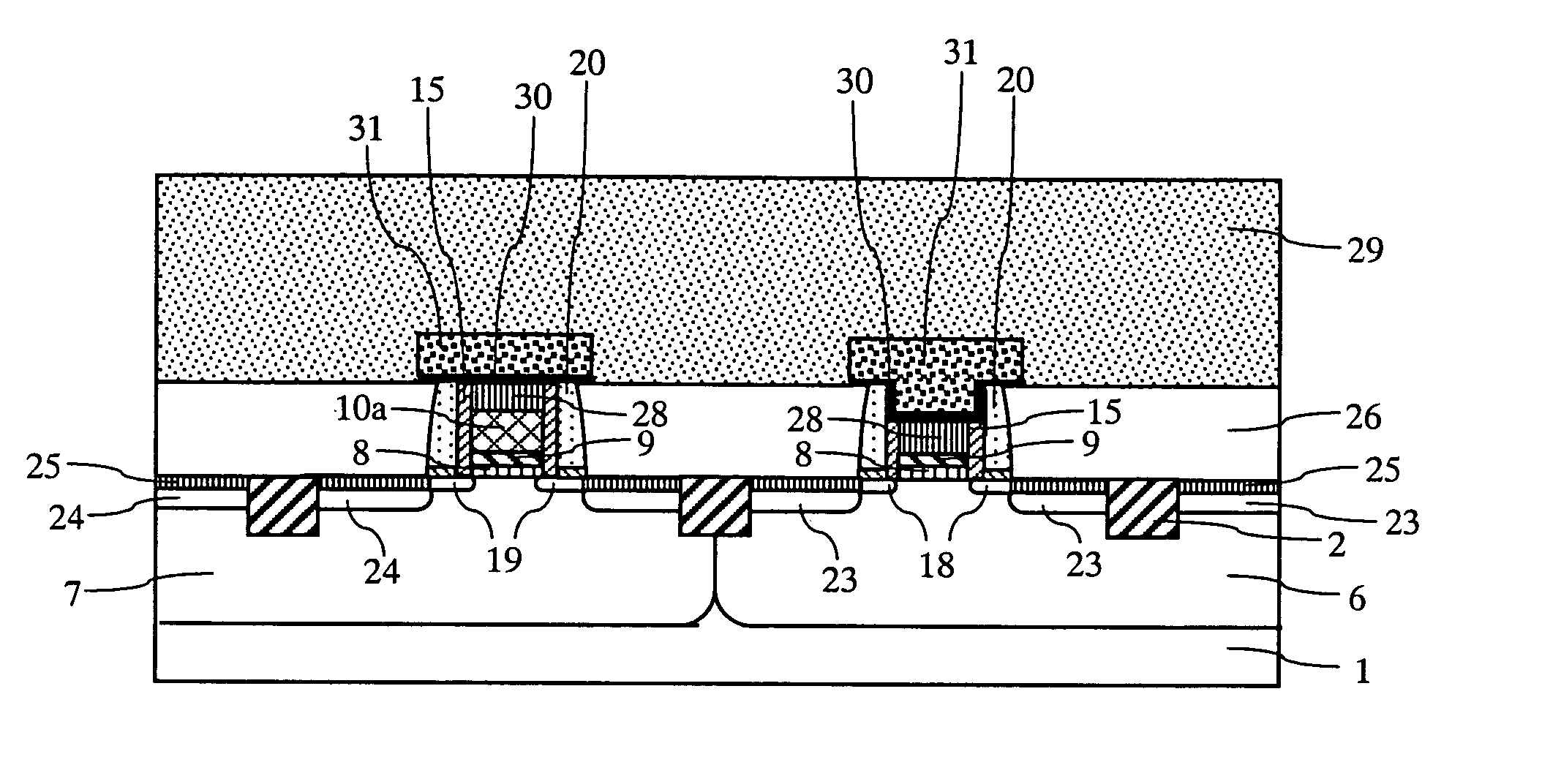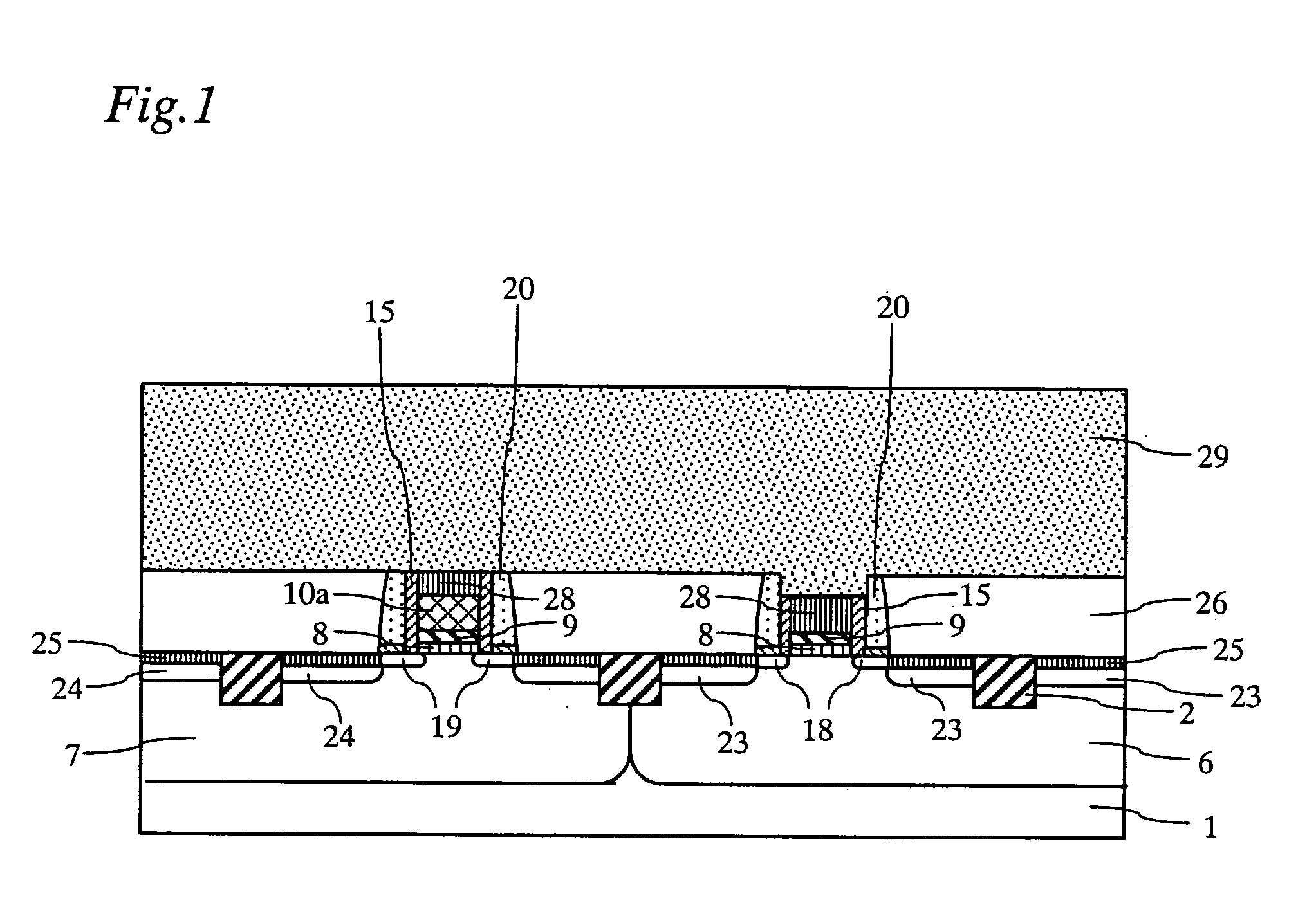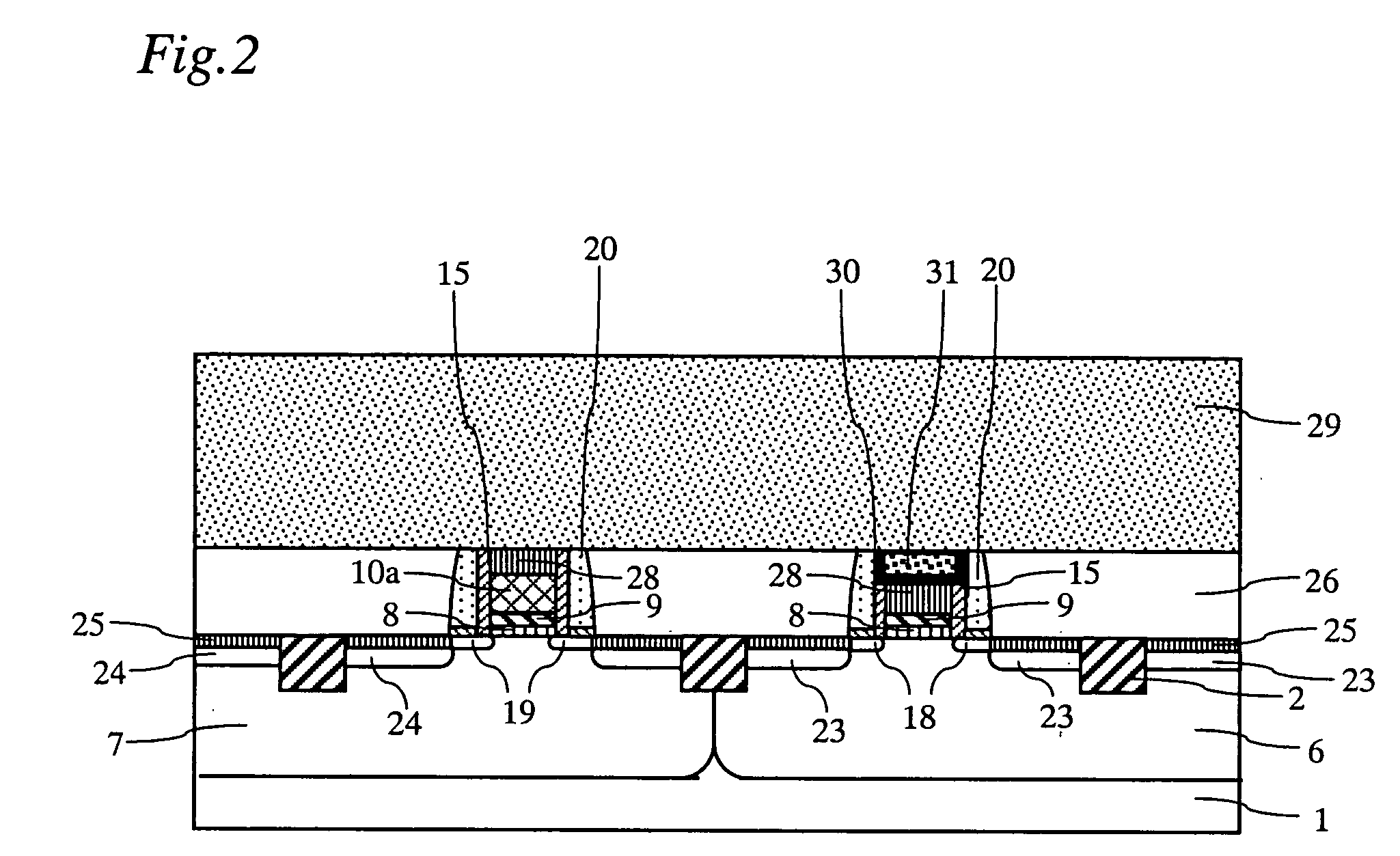Semiconductor device and manufacturing method therefor
a technology of semiconductors and semiconductors, applied in the direction of semiconductor devices, electrical appliances, transistors, etc., can solve the problems of increasing leakage current, reducing film thickness, and unable to ensure the desired drain current level
- Summary
- Abstract
- Description
- Claims
- Application Information
AI Technical Summary
Benefits of technology
Problems solved by technology
Method used
Image
Examples
first embodiment
[0094]FIG. 1 is a cross-sectional view of a semiconductor device according to a first embodiment of the present invention.
[0095] Referring to the figure, a element isolation insulating film 2 is formed around the device regions in a silicon substrate 1. Within the device regions are formed an n-type diffusion layer region 6, a p-type diffusion layer region 7, a p-type extension region 18, an n-type extension region 19, a p-type source / drain region 23, an n-type source / drain region 24, and a nickel silicide film 25.
[0096] The gate dielectric film formed on each channel is made up of a first insulating film and a second insulating film formed on the first insulating film. The first insulating film is a silicon oxide film 8 acting as an underlying interface layer, while the second insulating film is a hafnium silicon oxynitride film 9, which is a high dielectric constant insulating film.
[0097] The n-type gate electrode is made up of an n-type silicon film 10a and a nickel silicide f...
second embodiment
[0135]FIG. 13 is a cross-sectional view of a semiconductor device according to a second embodiment of the present invention.
[0136] Referring to the figure, a element isolation insulating film 102 is formed around the device regions in a silicon substrate 101. Within the device regions are formed an n-type diffusion layer region 106, a p-type diffusion layer region 107, a p-type extension region 1018, an n-type extension region 1019, a p-type source / drain region 1023, an n-type source / drain region 1024, and a nickel silicide film 1025.
[0137] The gate dielectric film formed on each channel is made up of a first insulating film and a second insulating film formed on the first insulating film. The first insulating film is a silicon oxynitride film 108a acting as an underlying interface layer, while the second insulating film is a hafnium silicate film 109a, which is a high dielectric constant insulating film.
[0138] The n-type gate electrode is made up of an n-type silicon film 1010a ...
third embodiment
[0160] FIGS. 18 to 24 are cross-sectional views of semiconductor devices according to a third embodiment of the present invention.
[0161] Referring to FIG. 18, a element isolation insulating film 202 is formed around the device regions in a silicon substrate 201. Within the device regions are formed an n-type diffusion layer region 206, a p-type diffusion layer region 207, a p-type extension region 2018, an n-type extension region 2019, a p-type source / drain region 2023, an n-type source / drain region 2024, and a nickel silicide film 2025.
[0162] The gate dielectric film formed on each channel is made up of a first insulating film and a second insulating film formed on the first insulating film. The first insulating film is a silicon oxide film 208 acting as an underlying interface layer, while the second insulating film is a high dielectric constant insulating film made up of a hafnium oxide film 209b and a silicon nitride film 209c formed on the hafnium oxide film 209b.
[0163] The ...
PUM
 Login to View More
Login to View More Abstract
Description
Claims
Application Information
 Login to View More
Login to View More - R&D
- Intellectual Property
- Life Sciences
- Materials
- Tech Scout
- Unparalleled Data Quality
- Higher Quality Content
- 60% Fewer Hallucinations
Browse by: Latest US Patents, China's latest patents, Technical Efficacy Thesaurus, Application Domain, Technology Topic, Popular Technical Reports.
© 2025 PatSnap. All rights reserved.Legal|Privacy policy|Modern Slavery Act Transparency Statement|Sitemap|About US| Contact US: help@patsnap.com



